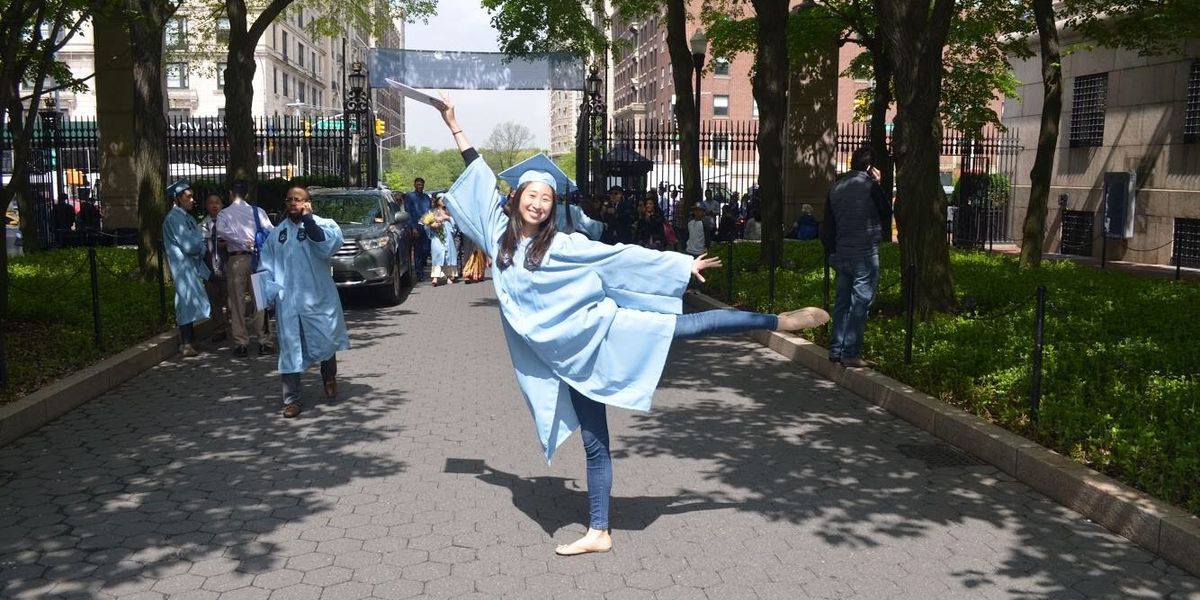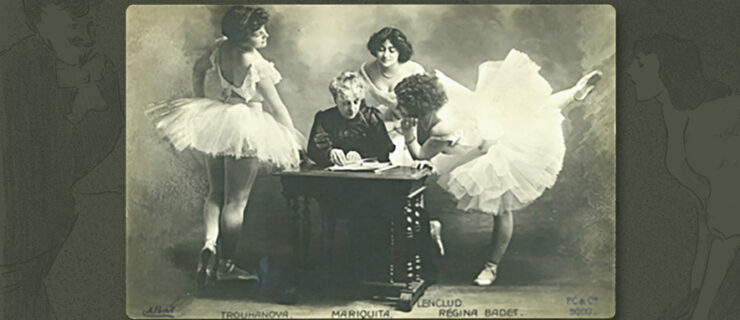Life After the Corps de Ballet: Retiring with Little Fanfare, but Carrying Big Rewards
Corps de ballet dancers make up the backbone of any major ballet company, but often their retirements go unnoticed. A name disappears in the playbill, with little public recognition. These vital members of the ballet community offer valuable and often unheard perspectives. Pointe caught up with three retired senior corps members, all in different phases of their post-ballet lives, to learn about their transitions out of dance and their reflections on the careers they left behind.
Amir Yogev

Jordan Elizabeth Long and Amir Yogev in Balanchine’s Who Cares?
Alexander Iziliaev, Courtesy MCB
Although his final season with Miami City Ballet was cut short due to the coronavirus pandemic, Amir Yogev feels grateful that he danced in the all-male adagio of Justin Peck’s Rodeo: Four Dance Episodes for his last show. “[It was a] moment frozen in time where I could truly take in the audience, be with my MCB family, and dance in a free and expressive way men seldom get to experience in ballet,” he says.
Yogev’s early career was affected by another major national emergency: Just three years after joining MCB, he was laid off due to the 2008 financial crisis. In hindsight, Yogev credits this hard moment with pushing him to find a spot with Pennsylvania Ballet. He danced with PAB for seven seasons, finding value and fulfillment as he grew into his role as a senior corps member. “It’s easy to find your weaknesses and shortcomings, but being thrown into featured roles early on gave me the space to find my confidence,” says Yogev. Two of his favorite memories include performing in William Forsythe’s The Vertiginous Thrill of Exactitude and taking on the title role in Trey McIntyre’s Peter Pan. In 2016, he rejoined MCB, this time under a different director and with years of experience.

Yogev (right) in Justin Peck’s Rodeo: Four Dance Episodes
Daniel Azoulay, Courtesy MCB
When Yogev’s husband got a job in New York in 2019, he knew it was the right time to move on. Retiring during a pandemic comes with challenges, but Yogev, who is in school with hopes to pursue a business degree, finds some solace in how his current state of limbo reflects that of the world. He admits he will miss the camaraderie with his co-workers most of all. MCB dancers recently sent him a video with messages reflecting on his long career. “There is a mutual understanding and community in the corps that higher ranks don’t always experience,” says Yogev. “I would have never imagined the career I had.”
Lara Tong

Lara Tong in Balanchine’s Walpurgisnacht Ballet
Paul Kolnik, Courtesy NYCB
“It was a privilege to be able to get paid to be onstage and be surrounded by beautiful music,” says former New York City Ballet corps member Lara Tong about her seven-year career there. Tong relished performing Balanchine staples such as “Emeralds” and Serenade, and taking on more featured roles in Walpurgisnacht Ballet and Swan Lake.
However, Tong envisioned a second career in medicine, and realized that staying longer at NYCB meant less opportunity to pursue that path. So in 2016, Tong decided to leave the company to finish her degree at Columbia University. She finished her last Lincoln Center season with George Balanchine’s A Midsummer Night’s Dream. “I really enjoyed every single one of my last shows, soaking everything in,” she says.
During her time at the School of American Ballet, Tong dealt with an almost career-ending injury, which spiked her curiosity in the body and medicine. She reflects on various doctor visits with different degrees of success, remembering one instance when a physician told her to give up and go home. “It made such a difference to see a doctor who was empathetic and emotionally aware of how to support their patient,” she says. With this in mind, Tong sought out volunteer opportunities in the medical field during her off seasons with NYCB. She spent time at various hospitals and completed clinical research, confirming her desire to work in medicine.
Tong recently graduated from Columbia and will start medical school this fall. She credits her husband for supporting her through this transition and for encouraging her to explore her options, post-dance. Tong hopes to bring the same focus she possessed as a dancer into her career as a physician, helping patients in their most vulnerable moments. She looks back at her time with NYCB fondly and with pride, especially as one of the few Asian-American dancers in the company. “Hopefully the next Asian girl in the school will feel better about her chances of getting into the company…because someone else did it. There’s hope.”
Charlene Aldred

Charlene Aldred in William Forsythe’s Vertiginous Thrill of Exactitude
Erik Tomasson, Courtesy SFB
Charlene Aldred (formerly Cohen) was thriving at San Francisco Ballet, dancing triple bills almost every night. But the all-consuming nature of the job was taking its toll, and she longed for more autonomy and a normal schedule. In 2013, after seven seasons for Miami City Ballet and six with SFB, and with a vast amount of repertoire under her belt (including principal, soloist and corps roles), she knew it was time to move on. “It started feeling like a sacrifice,” says Aldred. “When I hit my 30s, I just wanted to have a little more free time.” For one of her last shows she danced a soloist part in Raymonda Act III and a principal role Val Caniparoli’s Ibsen’s House. The performance was attended by her family and friends, and afterwards they celebrated with a large 1950s-themed retirement party.
During her dance career Aldred found a second passion in the Gyrotonic Method, a movement system that combines motion, breath and mental focus. It was a saving grace when her workload felt overwhelming. After her retirement, she started teaching at a local studio, and within a month had a full client load. Seven years later, Aldred owns her own Gyrotonic studio, The Seed Center, and works with a variety of clients, including many SFB dancers. Aldred credits her time as a dancer in preparing her to run her own business while simultaneously raising two boys under the age of 3. “Dance teaches us how to deal with stress, how to keep moving, keep working, and to not be bogged down by things,” she says.

Courtesy Aldred
Aldred is still close with her SFB family and often jokingly reassures them that life after ballet is “quite nice.” Looking back, her advice to younger dancers would be to know their worth by advocating for themselves, something she wished she had done more. Still, she values all the memories, friendships, and lessons a life in ballet has given her. “I’ve come to realize I’ll always be a dancer. No matter what you do, that never goes away.”





